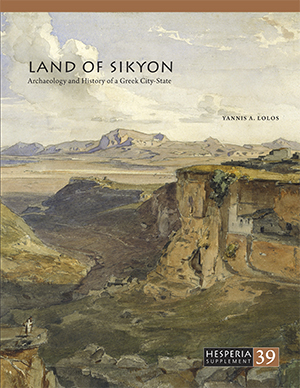Land of Sikyon: Archaeology and History of a Greek City-State

by Yannis A. Lolos
Hesperia Supplement 39
664 pp, 427 col and b/w figs, 6 col maps in back pocket
8.5" x 11"
Hardcover, ISBN: 978-0-87661-539-3
Publication Date: Dec 2011
Status: Active
Retail Price $75
BUY PRINT
BUY EBOOK
VIEW ONLINE
Ancient Sikyon, in the northeastern Peloponnese, was a major player on the Mediterranean stage, especially in the Archaic and Hellenistic periods. This comprehensive study combines a discussion of the geological and historical background with the results of original research based on many years of archaeological fieldwork. Author Yannis Lolos, drawing upon the limited excavations in Sikyonia, literary sources, and mostly his own extensive survey data, traces the history of the human presence in the territory of Sikyon from prehistory to the early modern period. A series of detailed maps plots the position of many previously unknown roads, fortifications, and settlement sites.
About the Author: Yannis Lolos is an Associate Professor of Archaeology at the University of Thessaly.
Reviews:
"Lolos has established what must stand as the most comprehensive account of the visible antiquities of the Sikyonia." Mark Munn, Professor of Ancient Greek History, Greek Archaeology, and Classics and Ancient Mediterranean Studies, Penn State University
"Land of Sikyon represents a major advance in our understanding of an important region of the Peloponnese. Apart from its contribution to our knowledge of Sikyon itself, it helps to clarify the geographical and political relationships between that state and Corinth, Phlious, and Kleonai, and so will be welcomed by scholars with interests in all those areas." Mark Landon, Visiting Assistant Professor, Department of Classics, Mount Holyoke College
"This work serves as a model for producing large collections of new data and outlines both the possible achievements and inevitable pitfalls of field survey. For the reader who is interested in, or works at, the intersection of history, landscape archaeology and historical geography, this book will definitely be of use." Konstantin Boshnakov, Phoenix 68.3-4 (2014)
